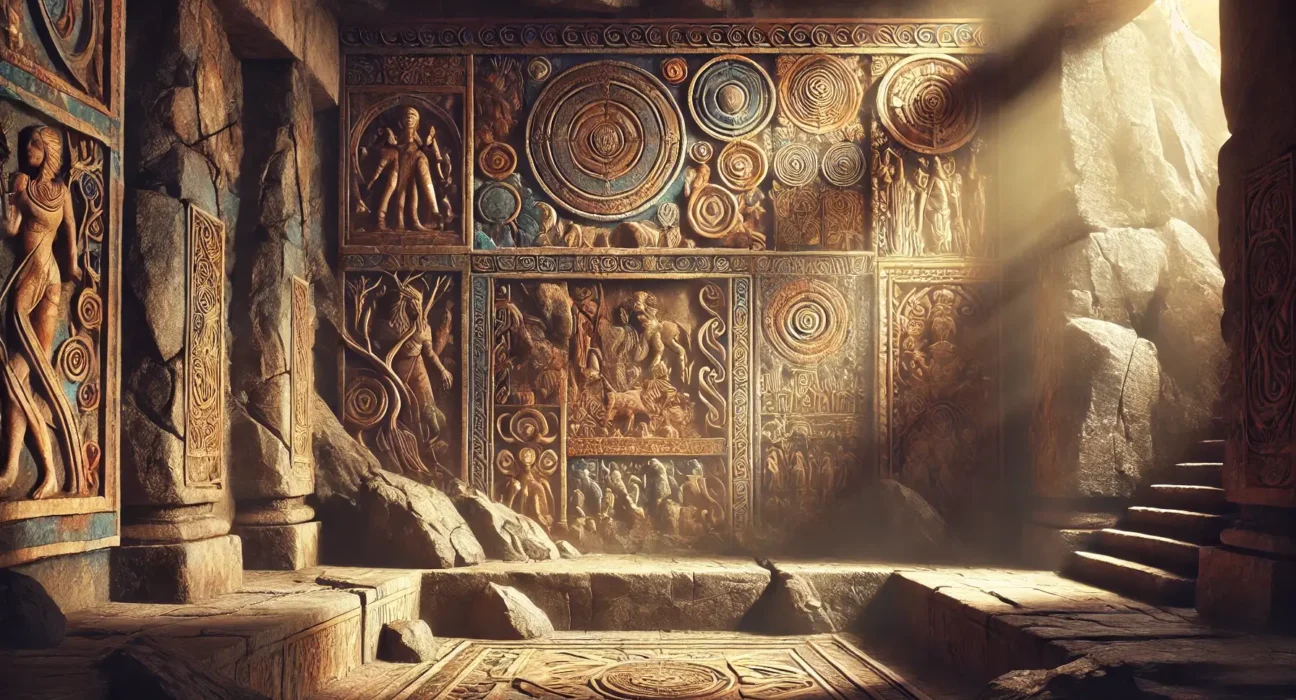Art has always been integral to human civilization, allowing communities to express their ideas in history, culture, and creativity. Ancient Artz is a testimony to human creativity and profundity in the multitude of styles of artwork. From cave paintings from the past to impressive artworks, the art form has had a profound impact on generations of people. This blog post explores The realm of Ancient Artz, looking at its history, development techniques, and most important civilizations that left beautiful artifacts.
What is Ancient Artz?
Ancient Artz refers to the artistic expressions of ancient human civilizations, which range from the Paleolithic period until the demise of significant empires like Rome, China, and the Maya. “Artz” is a broad term that covers various artistic styles, including sculpture, painting, ceramics, pottery, textiles, and even architecture. The works of art they created weren’t just aesthetic but also intertwined with their respective societies’ religious, cultural, and political aspects.
Key Characteristics of Ancient Artz
- Storytelling and Symbolism: The ancient Artz frequently told mythological, religious, and the stories of culture.
- Material: Artists worked with items readily available in their environments, like clay, stone wood, metal, and stone.
- Scope: The art form was used as a tool for ritual communication and preserving culture and historical records.
The Origins of Ancient Artz
The Birth of Visual Storytelling
The earliest traces of Ancient Artz date back to prehistoric times, with the first discovered examples being cave drawings. These paintings, which were discovered in caves such as those of Lascaux in France or Altamira in Spain, were usually depictions of hunting scenes as well as animals. These paintings from the early days had practical uses, for instance, instructing survival techniques; however, they may also have a ritual or spiritual significance.
Art and Spirituality in Early Civilizations
As societies developed, so did their art. In ancient Mesopotamia, Egypt, and the Indus Valley, art became increasingly interspersed with the politics of religion. Temples, tombs, and palaces were used as canvasses for elaborate representations of rulers, gods, or the past. The purpose of this art was to celebrate gods and immortalize rulers, acting as a method of communication as well as a means of propaganda.
Iconic Examples of Ancient Artz
Ancient art is distinguished by the variety of its cultures and art forms. Let’s review some famous artworks from ancient civilizations.
Egyptian Art
Egyptian art is renowned for its artistic and symbolically portrayed representations of the gods and the afterlife. One of the more well-known instances is that of Giza—pyramids at Giza and Giza were built to serve as graves to honor the Pharaohs. The tombs’ walls were decorated with vibrant paintings and hieroglyphs that depicted gods or animals and scenes from everyday life. These paintings were made so that the souls of the dead would thrive in the next life.
Key Features of Egyptian Art
- Hieroglyphs are used to tell stories: The combination of images and text to tell stories.
- The Symmetry of Order and the Harmony: Figures were typically shown in a profile to ensure consistency.
- The Spiritual representation: It is a form of art that aims to keep the divine order intact and ensure an afterlife.
Greek and Roman Art
Ancient Greek and Roman art is most likely recognized in the form of realistic sculptures and massive architectural designs. The Greeks concentrated on enhancing the human body and form, evident in works such as that of the Discobolus (The Discus Thrower) by Myron and the Venus de Milo. These sculptures were more than artistic; they also represented gods and ideals of beauty.
Roman art, on the other hand, was more centered on portraiture and realism, keeping the appearance of emperors, politicians, and soldiers. Roman mosaics and frescoes were extremely detailed and often depicted everyday life gods and mythological characters.
Key Features of Greek and Roman Art
- The Human Form in Focus: The Greeks emphasized beauty and proportion in their sculptures.
- The Realism of Roman Portraiture: Romans were renowned for their intricate and accurate representations of human figures.
- Architectural Marvels: Both cultures created awe-inspiring structures like the Parthenon and the Colosseum.
Chinese Art
Chinese arts have a long history that spans many thousands of years. A few of its most well-known styles can be found in Chinese calligraphy, which is considered both an art form and an occult practice. Other examples are jade carvings and bronze sculptures that were made to serve both ritual and everyday purposes.
The Terracotta Army, composed of over 8000 life-sized statues, is among the most well-known ancient Chinese artifacts. These statues were erected to guard the burial place of the first Emperor in China, Qin Shi Huang.
Key Features of Chinese Art
- Material Symbolism: Jade and bronze were highly prized and often used as ritual objects.
- Calligraphy and painting: Brushwork was a coveted skill, frequently representing philosophy and art.
- Incorporation with Nature: Art was profoundly inspired by nature and religious belief systems.
More To Read: prostavive colibrim
Techniques and Materials Used in Ancient Artz
Stone and Clay
Ancient artists typically employed stones and clay to make sculptures and pottery. Stone was often used to create huge statues like the ones of Egyptian Pharaohs and Greek gods. Clay tablets and ceramics were also crucial in the ancient world and were used for both artistic and practical purposes.
Metalworking and Jewelry
Metalworking was an essential skill in ancient Mesopotamia and Egypt. Bronze, gold, and iron were used to make tools, jewelry, and other ceremonial items. The renowned Tutankhamun’s Mask is an example of the intricate metalwork that was used in the burial rituals of the Egyptian royal family.
Textiles and Paintings
The art of textiles was widespread in many ancient societies, especially in areas such as China and the Andean civilizations. Dyeing, weaving, and embroidery were significant aspects of the cultural identity. Frescoes and murals on walls and tombs were also used to tell stories and show the sacred.
The Purpose of Ancient Artz
Art as a Religious Tool
For many cultures in the past, art was a way of establishing a connection with the divine. Egyptian grave paintings, Greek God statues, and Roman frescoes were all designed to praise gods and ensure blessings. Art was also used to perform ceremonies, as sacred objects were made to symbolize gods’ spirits, spirits, or ancestral ancestors.
Art for Political and Social Control
Ancient art also played a crucial role in the political process. The rulers utilized art to demonstrate the power of God and divine right. Roman emperors, for example, had massive reliefs and statues to increase their power and legitimacy. The art produced during these times was usually an instrument for propaganda.
Preserving Ancient Artz: The Role of Museums and Technology
The Role of Museums
Museums worldwide are crucial to preserving the history of art. Institutions such as the British Museum and the Louvre have an array of antiquated art collections that allow contemporary viewers to discover and appreciate the significance of these works—conservation techniques, like digital scanning and meticulous restoration, aid in preserving the artifacts for the future.
Technology in Art Preservation
Modern technology has transformed the way we conserve ancient art. Digital archives and virtual tour tours allow art to be explored and studied without risk of damage. Modern techniques like 3D printing have enabled the reproduction of lost artifacts from the past and bring lost the past back to.
How to Appreciate and Connect with Ancient Artz Today
Visit Museums and Galleries
One of the most effective methods of experiencing Ancient Artz is visiting galleries and museums exhibiting these earliest works. Many institutions offer virtual tours, which make it much easier than ever before to discover the ancient art form from the privacy of your own home.
Integrate Ancient Aesthetics into Modern Life
Incorporating elements from Ancient Artz into your contemporary life is also possible. From using old-fashioned patterns and designs in your home decor to wearing pieces of jewelry designed by ancient civilizations, the timeless appeal of the art still inspires modern-day design.
Join Art Through Education
If you’re looking to know more, many documents, books, and classes are available that go into greater detail about the background and methods behind Ancient Artz. Understanding the context in which the art was developed adds an additional layer of admiration for its beauty.
Conclusion
Ancient Artz offers an exclusive glimpse into the past, allowing us to better understand early civilizations’ beliefs, cultures, and values. Whether it’s the carvings on stone from Egypt or the frescoes from Pompeii, the designs are timeless and continue to inspire artists of today and art lovers alike. Through the preservation and study of ancient art, we guarantee that the heritage of our forefathers continues to be passed on to the next generation.






